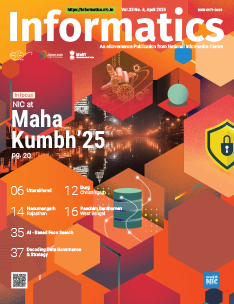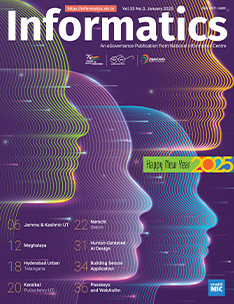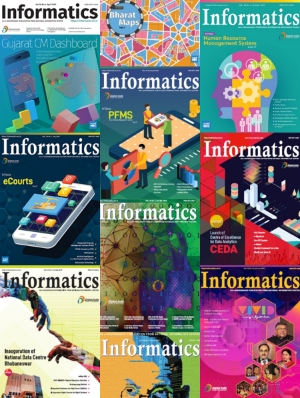State Election Commission, Punjab Unveils Local Bodies Poll Activity Monitoring System (LBPAMS) developed by NIC Punjab for Gram Panchayat Elections 2024
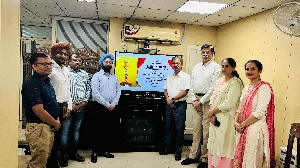
In a transformative step towards modernizing electoral processes, Sh. Raj Kamal Chaudhary, State Election Commissioner, Punjab launched Local Bodies Poll Activity Monitoring System (LBPAMS) on 6th October 2024. LBPAMS has been envisaged to enhance transparency and streamline election management of upcoming Gram Panchayat Elections in Punjab set to take place on October 15, 2024. Developed by dedicated team of NIC Punjab under the guidance of Sh. Vivek Verma, Deputy Director General & SIO Punjab and Ms Usha Rai, Senior Director (IT), in a very short span of time, LBPAMS will serve as a vital tool, offering real time information to voters, candidates, and election officials, ensuring a smoother and more efficient election process.
The LBPAMS platform is designed to simplify and digitize election operations, featuring a suite of following modules:
1. Publishing of Voter Electoral Roll Online:
This module enables voters to verify their details on the Gram Panchayat Electoral Roll seamlessly. Panchayat wise voter lists have been uploaded on the State Election Commission and district websites. Voters can confirm their eligibility to cast vote and any discrepancies can be got rectified through concerned authority. This module helps in ensuring that voters are correctly listed in their respective panchayats, contributing to a more organized and accurate electoral process.
2. Know Your Candidate, Unopposed Module:
Voters will have easy access to detailed information about all candidates contesting for the roles of Sarpanch and Panch in their respective Panchayats and wards. This module will also highlight candidates running unopposed and provide information about reserved categories within each Panchayat and ward. By empowering voters with this transparency, LBPAMS encourages informed decision making, ensuring that citizens are well equipped to cast their vote on Election Day.
3. Real Time Event Monitoring on Pre Poll and Poll Days:
One of LBPAMS's standout features is its ability to track key events leading up to and on the day of elections. This mobile based application allows election officials, including Returning Officers (ROs), to capture and report on following crucial election activities in real time:
- Party Dispatched
- Party Arrived
- Polling Station Setup
- Poll Started
- Voter Turnout (updated every two hours)
- Voter Queue Status
- Final Votes Polled
- Poll Ended
- Party Departed from Polling Station
- Party Arrived at Polling Station
- Ballot Boxes Deposited
4. One Stop Dashboard:
Local Bodies Poll Activity Monitoring System (LBPAMS) also features One Stop Dashboard, designed to provide election officials with a centralized hub for accessing and managing critical data. This dashboard allows State Election Commission officers, District level officers, Block level officers, and Returning Officers to view real time election activity across all administrative levels.
Additionally, the dashboard serves as a fail safe solution for entering data manually. In cases where mobile applications experience technical difficulties, authorized stakeholders can log into the dashboard directly via the portal to input essential data. This ensures uninterrupted flow and accuracy of election data, guaranteeing that all crucial information is captured and available for review and analysis in real time.
5. Law and Order Situation Monitoring for Polling Stations
Embedded within the mobile app and One Stop Dashboard, the Law and Order Situation Monitoring feature equips Returning Officers with the ability to swiftly report any law and order incidents occurring at polling stations. This real time reporting mechanism ensures that any disturbances or security issues are immediately reflected on the Dashboard, enabling state, district, and block level authorities to monitor the situation closely.
The instant visibility provided by this feature allows concerned officials to take immediate action, ensuring that timely resolutions are deployed to maintain order and uphold the integrity of the election process. By facilitating quick responses to emerging issues, this system is key to ensuring that the Gram Panchayat Elections are conducted in a free, fair, and peaceful manner, preserving voter confidence and the democratic process.
Results Declaration Across Panchayats and Panchayat Wards
Another key module within the Local Bodies Poll Activity Monitoring System (LBPAMS) is dedicated to the Results Declaration for all Panchayats and Panchayat Wards. This module allows Returning Officers to capture the election results directly through the mobile app. The results of every contesting candidate—whether running for Sarpanch or Panch, can be quickly and accurately recorded through this module, with the data immediately visible to the State, District, Block, and Panchayat levels in real time.
Additionally, the system is equipped to handle TIE situations during result declarations. In cases where two candidates receive an equal number of votes, the system adheres to the established process under Section 69, facilitating the resolution of ties through a draw of lots.
State Election Commissioner said that the real time tracking of poll related events facilitated by LBPAMS will enable officials to manage the election efficiently and ensure timely responses to any emerging situations. The State Election Commission urged all voters, candidates, and officials to utilize this platform to stay informed and actively participate in the democratic process
Sh. Vivek Verma Deputy Director General & SIO Punjab conveyed that the introduction of LBPAMS in State Election Commission marks a significant leap towards greater accountability, transparency, and participation in Punjab’s Gram Panchayat elections
State Election Commissioner thanked Sh. Vivek Verma, Deputy Director General & SIO, and NIC Punjab team comprising of Mrs. Usha Rai, Senior Director (IT), Mr. Pankaj Jain, Director (IT), Mrs. Rupinder Kaur, Joint Director (IT), Mr. Prince Goel, Deputy Director(IT) and all DIOs,ADIOs,DIAs in NIC District Centres for completing the project in short duration time.




 Subscribe
Subscribe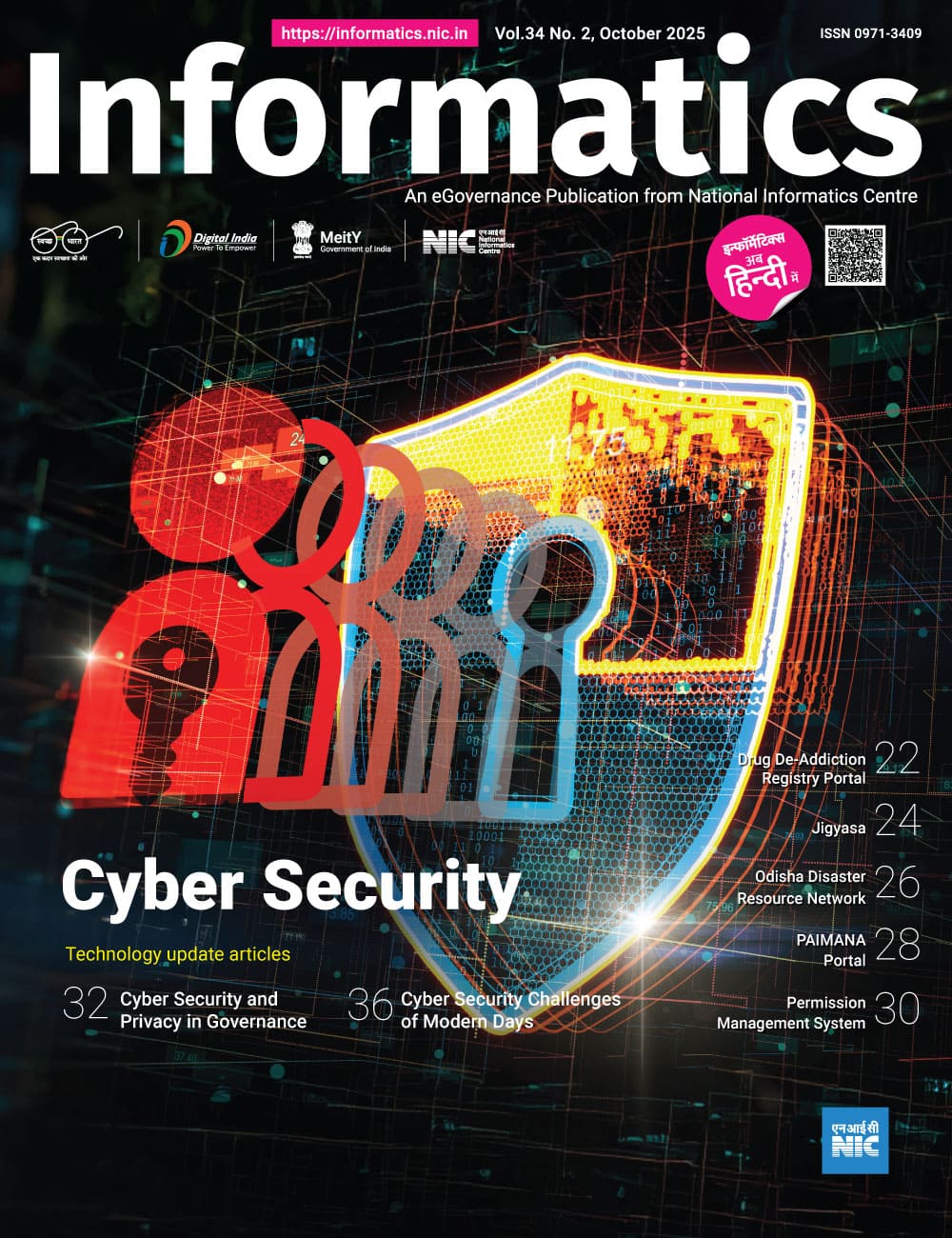
 Flipbook
Flipbook PDF (5.0 MB)
PDF (5.0 MB)
